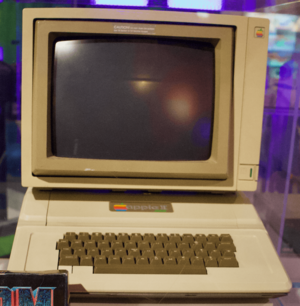John Romero facts for kids
Quick facts for kids
John Romero
|
|
|---|---|

Romero at the Game Developers Conference in 2022
|
|
| Born |
Alfonso John Romero
October 28, 1967 |
| Occupation | Video game designer, programmer |
| Known for | id Software, Ion Storm, Romero Games |
|
Notable work
|
|
| Spouse(s) |
Kelly Mitchell
(m. 1987; div. 1989)Elizabeth Ann McCall
(m. 1990; div. 1998)Raluca Alexandra Pleșca
(m. 2004; div. 2011)Brenda Romero
(m. 2012) |
| Partner(s) | Stevie Case (1998–2003) |
| Children | 3 |
Alfonso John Romero (born October 28, 1967) is a famous American video game designer and programmer. He is best known for co-founding the company id Software. At id Software, he helped create some of the most important video games ever made.
These games include Wolfenstein 3D (1992), Doom (1993), and Quake (1996). His work helped make the first-person shooter (FPS) genre incredibly popular. In an FPS game, players see the world through the eyes of their character. Romero also came up with the term "deathmatch" for multiplayer games where players battle each other.
After leaving id Software in 1996, he started other game companies, including Ion Storm and Romero Games. He continues to create new games and is a major figure in the video game industry.
Contents
Early Life and First Games
John Romero was born in Colorado Springs, Colorado. His family background includes Mexican, Yaqui, and Cherokee heritage. From a young age, he was fascinated by arcade video games. Games like Space Invaders and Pac-Man inspired him to start thinking about how games were made.

In 1980, Romero got an Apple II computer and began teaching himself how to program. His first published game, Scout Search, appeared in a magazine in 1984. He spent years creating games on his own before getting his first job in the video game industry at Origin Systems in 1987.
Career in Game Development
The id Software Years
In 1991, Romero and three of his colleagues—John D. Carmack, Adrian Carmack, and Tom Hall—left their jobs to start their own company. They called it id Software. This became one of the most famous game studios in history.
At id Software, Romero was a key designer and producer. The team created a series of hit games that changed the world of PC gaming.
- Commander Keen: An early series of platform games that helped make id Software famous.
- Wolfenstein 3D: A fast-paced shooter that is often called the "grandfather" of the FPS genre.
- Doom: A groundbreaking game known for its 3D graphics, intense action, and multiplayer mode. Romero designed most of the first part of the game.
- Quake: Another revolutionary FPS that introduced true 3D worlds and was perfect for online "deathmatch" battles.
Romero was not just a designer. He also wrote many of the software tools that the team used to build their games, like the level editors DoomEd and QuakeEd.
The Secret in Doom II
In the game Doom II, there is a famous secret, or "easter egg." The final boss is a giant demon head. A strange, demonic-sounding message plays when you first see it. If you play the sound backward, you can hear John Romero's voice saying, "To win the game, you must kill me, John Romero!"
Players can even use a cheat code to go inside the boss's head. There, they can find a picture of Romero's head on a stick. This was an inside joke among the developers at id Software.
Leaving id Software
During the making of Quake, Romero and John Carmack had different ideas about what the game should be. These creative differences led to tension in the company. In 1996, after Quake was released, Romero was asked to leave id Software.
Years later, both Romero and Carmack said they regretted how things happened. They are now on good terms and remain friends.
Starting New Companies
After leaving id, Romero started a new game studio called Ion Storm with Tom Hall. There, he directed the game Daikatana. The game was famous for an ad that many people found offensive, and Romero later apologized for it. When Daikatana was finally released in 2000, it did not sell well and received poor reviews.
In 2001, Romero and Hall left Ion Storm and started Monkeystone Games. This company focused on making games for mobile devices, which was a new idea at the time. He later worked at Midway Games on the game Gauntlet: Seven Sorrows.
In 2015, Romero and his wife, Brenda Romero, started a new company called Romero Games in Ireland. They have released several games, including Empire of Sin and SIGIL, a new episode for the original Doom.
Personal Life

John Romero is married to Brenda Romero, who is also a successful and award-winning game designer. They often work on games together at their company, Romero Games. He has three children from previous relationships.
Romero is known for his long hair, which he has said he wears as a proud symbol of his Yaqui and Cherokee heritage. In 2023, after living in Ireland for many years, he became an Irish citizen.
When asked about his favorite games, he has mentioned classics like Chrono Trigger and modern hits like World of Warcraft and Minecraft.
Awards and Recognition
John Romero has received many awards for his work in the video game industry. He is seen as a pioneer who helped shape modern gaming.
- In 1997 and 1998, Time Magazine named him one of the "Cyber Elite 50," a list of the most important people in technology.
- In 2017, he was given the "Development Legend" award at the Develop:Brighton conference.
- In 2023, he received the Lifetime Achievement Award at the Game Developers Conference for his lasting impact on video games.
See also
 In Spanish: John Romero para niños
In Spanish: John Romero para niños

